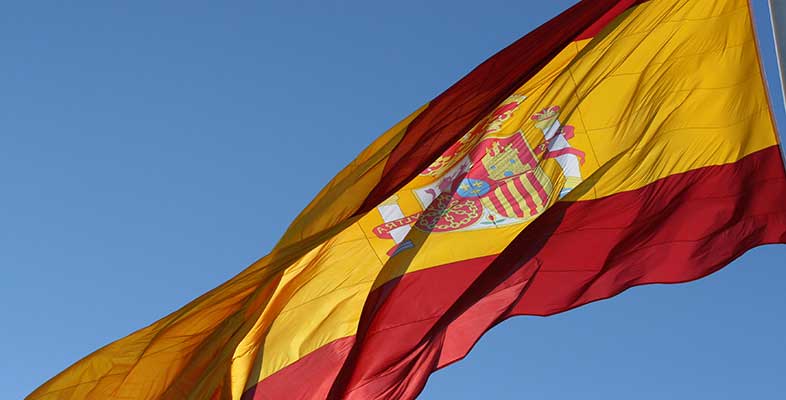2.2 Actividad
In this activity you are going to listen to two people being interviewed about monuments and sights in their country. You will also learn how to say where things are.
| detrás de | behind |
Actividad 2.2
Listen and choose the correct option below.
Escoja la opción correcta.
Transcript: Monuments and sights
music: BPM2007 track 16. dur: 00.33
music: CD77124 Brazil & Argentina. track 4 dur: 00.45
a.
Valencia
b.
Galicia
c.
Andalucía
The correct answer is c.
a.
Córdoba
b.
Sevilla
c.
Granada
The correct answer is c.
a.
Sevilla
b.
Granada
c.
Córdoba
The correct answer is a.
a.
Paraguay
b.
Uruguay
c.
Bolivia
The correct answer is b.
a.
en el este
b.
en el barrio de Priépolis
c.
en el centro
The correct answer is c.
ASKING WHERE A PLACE IS
To ask where a place is, use the interrogative pronoun dónde(where) and the verb estar. (Note that an upside-down question mark also appears at the front of the phrase.)
| ¿Dónde está (n) + (noun)? | Está(n) en + (place) |
|---|---|
| ¿Dónde está la Giralda? | Está en Sevilla. |
| ¿Dónde están las ruinas romanas? | Están en Mérida. |
| ESTAR | |||
| (yo) | estoy | (nosotros, -as) | estamos |
| (tú) | estás | (vosotros, -as) | estáis |
| (él / ella/usted) | está | (ellos/ellas/ustedes) | están |
To say ‘towards’, use hacia:
Zaragoza está hacia el este de España.
To say how near or far somewhere is, use está cerca (de) (‘it's near (to)’) or está lejos (de) (‘it's far (from)’):
Córdoba está cerca de Sevilla.
Montevideo está lejos de México D.F.
| ¿Cómo es la torre del Miguelete? | What is the Miguelete tower like? |
| Es muy alta | It's very tall. |
| Es muy antigua | It's very old. |
| ¿Dónde está el Miguelete? | Where is the Miguelete? |
| Está en Valencia. | It's in Valencia. |
| Está en el centro. | It's in the centre. |
